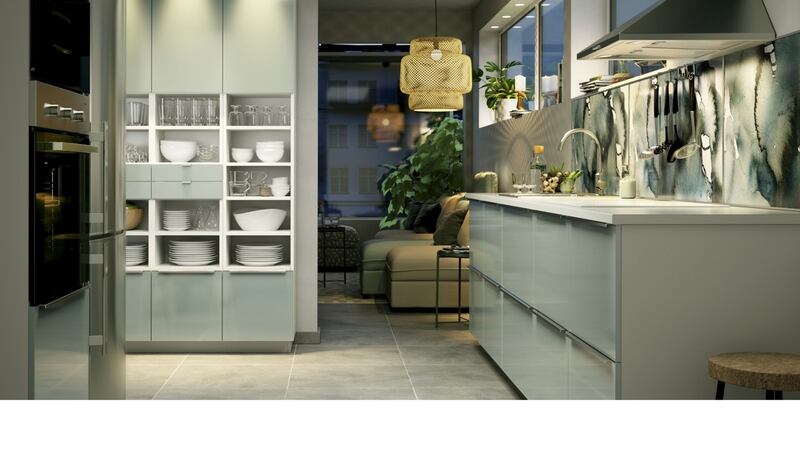Focusing on how the design of our homes and the spaces we spend time in affect behaviour and mood is something very dear to my heart.
By shifting the way we think about our living spaces from how they look to how they make us feel we can dramatically improve our day-to-day lives and enhance our wellbeing. And colour has a big part to play.
It can have a powerful effect on how our homes make us feel and this idea was very much the focus at the recent launch of Dulux colour of the year. Their shade for 2020 is Tranquil Dawn – a soft green hue that Marianne Shillingford, Dulux’s creative director compared with “the space between the land and sky”.
For many choosing the right shade can be a challenge. Here are four steps to follow for picking the right colour and making sure your rooms not only look great but make you feel great too.
How do you want to feel in the space?
When picking a colour to enhance the atmosphere of a room your starting point needs to be how you want the room to make you feel.
Your personality will have a big part to play here. For example, are you someone who likes to entertain a lot, who prefers company to spending time alone? Then you’ll likely prefer a vibrant and energised space. Or do you need quiet time, preferring peace and quiet? Then you’ll be looking to create a calm and relaxing room.
Colour choice is totally subjective and this is the really fun part of design. A one-size-fits-all approach doesn’t work. When it comes to picking colour you need to go with your gut. Believe it or not, your gut reaction to colour selection is the best indication of how you will feel once it’s up on the wall so don’t ignore it.
What will the room be used for?
Let how you plan to use each room influence your colour selection. The colour you choose to decorate your bedroom, for example, can actually play a part in the quality of your sleep, so it’s crucial to select your colour palette carefully.
Warm colours will tend to create a stimulating effect, while cooler colours, such as blues, pale greens and greys will produce a more calming and relaxing atmosphere.
Good colour choices to benefit sleep are soft, muted shades. Darker tones such as deep plums or rich burgundies can create a very luxurious and cosy environment, creating more of a cocoon-like effect. Try to stay away from high-energy colours like bright greens, strong reds, or bold, vibrant shades.

Take orientation into account
The room’s orientation will have a role to play in your choice of colour too. A north-facing room, for example, will lend itself well to warmer moodier colours and less so to crisp whites or cool greys. A south-facing room, however, can take a wider range of shades.
A common mistake is painting a north-facing room yellow to brighten it. Yellows are tricky as they often react poorly in the light that comes with the Irish climate and can look cold. Instead, opting for a more neutral shade with a little hint of green or earthy tone to it will make the room feel much warmer and inviting.
And be careful not to choose a colour because it looked great in a friend’s house. The same colour will look completely different in different light conditions. The colour might not work if your room’s orientation is not the same.
What time of day will the room be used most?
Think about the time of day you are most likely to be spending time in the room. This is important as it will determine whether the room is mostly lit with natural or artificial light and this will have an impact on how your paint colour looks.
Always test the colour in the room you plan to use it so you can see how it reacts with the light. For naturally-lit rooms, steer clear of any shade with a hint of pink or peach in it. These tones are tough to live with. This is particularly true with neutral shades – magnolia is a classic example – as their warmer tones tend to clash with everything.
Instead, choose a shade with a slight hint of green in it as this has a neutralising effect, meaning most colours will combine well with it. The green also means it will react well in the light that comes with the Irish climate, which tends to be very soft, as well as in other rooms with limited natural light.
For artificially-lit rooms, the colour temperature of the light bulbs is really important. Avoid cool colour temperature bulbs where possible. This will make wall colours look clinical – think dentist’s surgery. Instead, go for warm colour temperature.
Colour temperature is measured in degrees Kelvin. Any bulb between 2,400-2,700K will be warm, 2,700-3,500K will be lukewarm and anything over 3,500-4,000K will be cool. Most good bulb brands will display these ratings on the box.
Denise O’Connor is an architect and design consultant.











